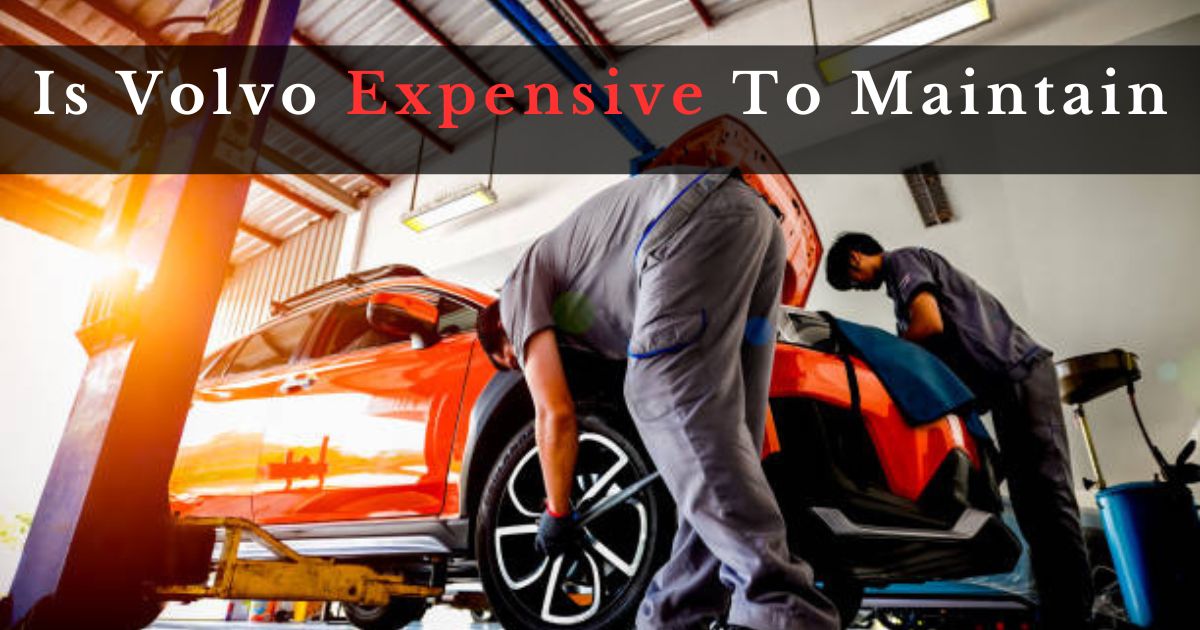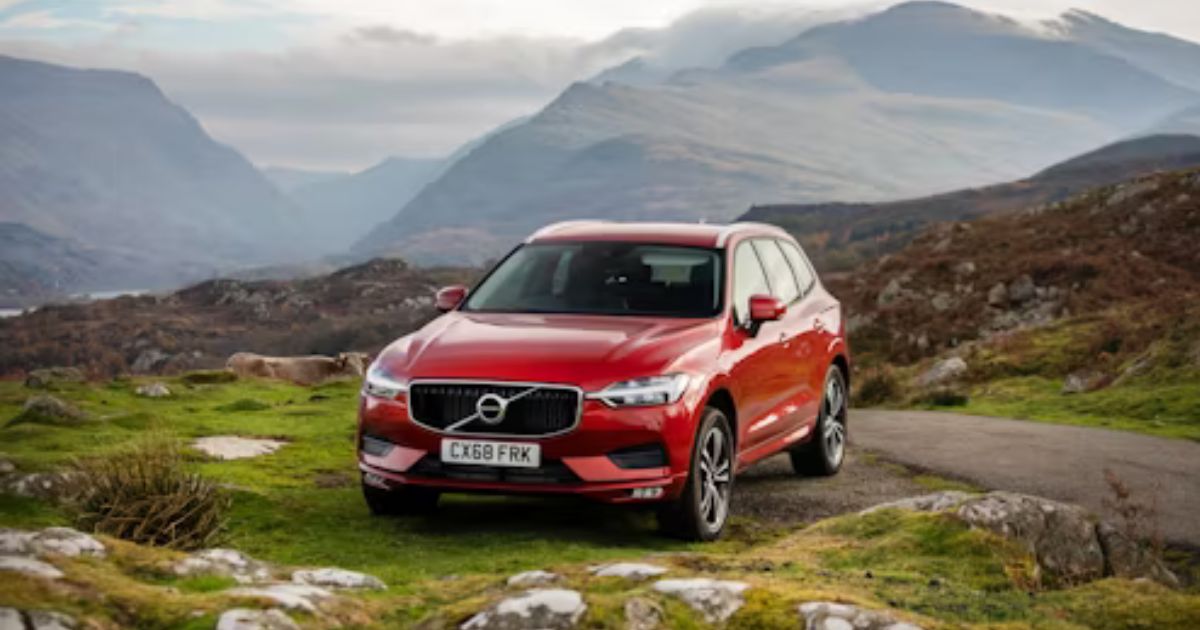Is Volvo expensive to maintain, Volvo makes cars that are known for being reliable and stylish. But many people wonder: Is Volvo expensive to maintain? Knowing how much it costs to keep a car running is important before buying one. In this article, we’ll explain Volvo’s maintenance costs, what affects them, and how they compare to other car brands.
Is Volvo Expensive To Maintain?
When it comes to choosing a car, maintenance costs are a significant consideration for many buyers. Volvo, a brand known for its safety and reliability, often sparks the question: “Is it expensive to maintain?” Let’s dive into the details to understand whether owning a Volvo could lead to higher maintenance bills compared to other cars.
Understanding Maintenance Costs
Every car requires regular maintenance to ensure it runs smoothly. Maintenance costs include everything from routine oil changes and tire rotations to more complex repairs. These expenses can add up over time, and they vary based on the car’s make, model, and age. Factors like the availability of parts, the complexity of the vehicle’s technology, and the need for specialized labor can all impact these costs.
Volvo’s Reputation
Volvo has a long-standing reputation for safety and durability. Founded in Sweden in 1927, the brand has consistently focused on producing vehicles designed to protect their passengers. This dedication to safety has made Volvo a respected name in the automotive industry. However, safety features and advanced technology often come with a price, which can influence maintenance costs.
Average Maintenance Costs for Volvo
On average, maintaining a Volvo tends to be more expensive than maintaining many other car brands. According to data from RepairPal, the average annual repair cost for a Volvo is around $769. This is higher than the average across all car brands, which is approximately $652 annually. Typical maintenance tasks for a Volvo include oil changes, brake pad replacements, and tire rotations, which are generally more expensive due to the quality of parts and labor involved.
Cost Comparison with Competitors
When compared to other luxury brands like BMW, Audi, and Mercedes-Benz, Volvo’s maintenance costs are generally on par or slightly lower. For instance, BMW’s annual maintenance costs can average around $968, and Audi’s around $987. Non-luxury brands like Toyota and Honda, on the other hand, typically have lower maintenance costs, averaging around $441 and $428 annually, respectively.
| Model | Starting MSRP (USD) | Body Style | Engine | Horsepower | MPG (city/highway) |
Key Specifications
|
| S60 | $41,500 | Sedan | 2.0L Turbocharged I4 | 250 hp | 25 / 36 |
Standard Pilot Assist, Sensus Connect infotainment system, panoramic sunroof (available)
|
| V60 | $44,100 | Wagon | 2.0L Turbocharged I4 | 250 hp | 25 / 36 |
Same as S60, plus power-folding rear seats, more cargo space
|
| S60 Recharge | $52,900 | Sedan | Plug-in Hybrid (2.0L Turbocharged I4 + Electric Motor) | 400 hp (combined) | Up to 87 MPGe (electric), 30 mpg (gas) |
All-wheel drive, electric range of up to 41 miles
|
| V60 Recharge | $55,500 | Wagon | Plug-in Hybrid (2.0L Turbocharged I4 + Electric Motor) | 400 hp (combined) | Up to 87 MPGe (electric), 30 mpg (gas) |
All-wheel drive, electric range of up to 41 miles
|
| XC40 Recharge Pure Electric | $48,400 | SUV | Electric Motor | 231 hp | Up to 131 MPGe, |
Front-wheel drive, estimated range of 223 miles
|
| XC60 | $44,000 | SUV | 2.0L Turbocharged I4 | 250 hp | 22 / 31 |
Standard Pilot Assist, City Safety suite, panoramic sunroof (available)
|
| XC60 Recharge | $53,900 | SUV | Plug-in Hybrid (2.0L Turbocharged I4 + Electric Motor) | 400 hp (combined) | Up to 75 MPGe (electric), 27 mpg (gas) |
All-wheel drive, electric range of up to 30 miles
|
| XC90 | $55,300 | SUV | 2.0L Turbocharged I4 | 316 hp | 21 / 29 |
Standard Pilot Assist, City Safety suite, panoramic sunroof (available)
|
| XC90 Recharge | $69,900 | SUV | Plug-in Hybrid (2.0L Turbocharged I4 + Electric Motor) | 400 hp (combined) | Up to 61 MPGe (electric), 25 mpg (gas) |
All-wheel drive, electric range of up to 40 miles
|
Why Volvos Might Seem Expensive
Several factors contribute to why Volvos might appear more expensive to maintain:
Parts Availability and Cost: Genuine Volvo parts can be more expensive and harder to find, especially for older models.
Specialized Service Requirements: Volvos often require specific tools and expertise for repairs, which can increase labor costs.
Technology and Features: Modern Volvos come equipped with advanced safety and tech features that may need specialized maintenance and repairs.
Factors That Can Increase Costs
Model and Year Variations: Newer models with advanced technology may incur higher maintenance costs.
Frequency of Use and Driving Conditions: Cars used frequently or driven in harsh conditions tend to wear out faster.
Owner’s Driving Habits: Aggressive driving can lead to more frequent repairs and higher costs.
Tips to Reduce Maintenance Costs
Regular Maintenance: Follow the maintenance schedule recommended by Volvo to prevent major issues.
Independent Repair Shops: Consider using reputable independent mechanics who may offer lower labor rates than dealerships.
Extended Warranties: Investing in extended warranties or service packages can cover unexpected repair costs.
The Role of Technology in Maintenance
Volvos are packed with technology that enhances safety and performance. However, this technology also means that maintenance often requires specialized diagnostic tools and software updates. While these features improve driving experience, they can add to maintenance costs due to the complexity of repairs.
Common Repairs and Their Costs
Some common issues with Volvos include:
Transmission Problems: Repairs can cost between $1,800 and $3,500.
Electrical Issues: Depending on the problem, costs can range from $150 to $1,000.
Suspension Repairs: Typically, these repairs cost around $500 to $1,200.
Preventive maintenance, like regular inspections and addressing issues early, can help mitigate these costs.
DIY Maintenance
For those who are handy, there are several maintenance tasks you can do yourself, such as:
Changing the Oil: Saves labor costs but still requires buying the right oil and filter.
Replacing Air Filters: A simple task that can improve engine performance.
Battery Replacement: Can be done easily with basic tools.
While DIY maintenance can save money, it’s important to ensure you have the right skills and tools to avoid causing more damage.
Volvo’s Warranty and Service Packages
Volvo offers a standard warranty that covers major repairs and service for the first few years of ownership. Additionally, Volvo provides service packages that include regular maintenance for a set period. These packages can be cost-effective for covering the routine service needs of your vehicle.
Customer Experiences
Many Volvo owners appreciate the brand’s safety features and driving experience but acknowledge that maintenance can be costly. Common praises include the durability and reliability of Volvos, while common complaints focus on the high cost of parts and the need for specialized service.
Long-Term Ownership Costs
Over time, the cost of maintaining a Volvo can increase as the vehicle ages. Older models may require more frequent repairs and replacement parts. However, Volvos generally hold their value well, which can offset some of the long-term maintenance costs.
In conclusion, maintaining a Volvo can be more expensive compared to some other brands, especially non-luxury vehicles. Factors such as the cost of parts, specialized service requirements, and advanced technology contribute to these higher costs. However, with regular maintenance and strategic cost-saving measures, it’s possible to manage these expenses effectively. Volvos offer a balance of safety, reliability, and performance that many owners find worth the investment.
FAQs
Are Volvos more expensive to maintain than other cars?
Yes, Volvos can be more expensive to maintain than many other cars, particularly non-luxury brands, due to higher parts and labor costs.
Can maintenance costs be reduced for Volvos?
Yes, costs can be reduced by following regular maintenance schedules, using independent repair shops, and considering extended warranties.
What are the most common maintenance issues with Volvos?
Common issues include transmission problems, electrical faults, and suspension repairs.
How does Volvo’s warranty help with maintenance costs?
Volvo’s warranty covers major repairs and routine service for the first few years, which can significantly reduce out-of-pocket maintenance expenses.
Is it worth buying a Volvo despite the maintenance costs?
Many owners find that the safety, reliability, and overall driving experience of a Volvo justify the maintenance costs.





